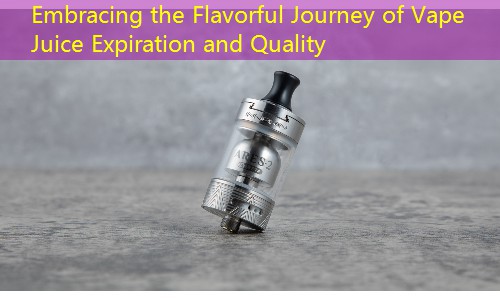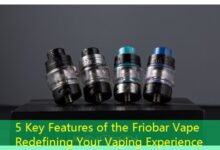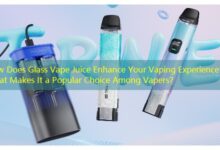Overview of Vape Juice Expiration

Vape juice, also known as e-liquid or e-juice, typically contains a mixture of propylene glycol, vegetable glycerin, flavorings, and nicotine. One of the most common concerns among vapers is whether vape juice expires and how this affects its quality and efficacy over time. While vape juice doesn’t come with an explicit expiration date, its integrity can diminish over time due to exposure to light, air, and temperature fluctuations. Once opened, most vape juice can last anywhere from six months to two years, depending on the ingredients and storage conditions. It’s crucial for users to store vape juice in a cool, dark place to prolong its shelf life. Oxidation can lead to changes in flavor and potency, making awareness of these factors essential for an optimal vaping experience. The initial quality of the ingredients also plays a significant role in determining how long the e-liquid will remain enjoyable. High-quality brands typically offer longer-lasting products that resist degradation better than cheaper alternatives.
Features of Vape Juice
Vape juice comes in a variety of nicotine levels, allowing users to choose their preferred dose, ranging from nicotine-free options to high concentrations. The flavor profiles are extensive and can include everything from traditional tobacco to sweet candy, fruity blends, and complex desserts, providing a customizable experience. Additionally, the ratio of PG (propylene glycol) to VG (vegetable glycerin) can influence the throat hit and vapor production, catering to different vaping styles, like mouth-to-lung or direct-to-lung inhaling.
Usage Experience
Vapers often seek smoothness and flavor intensity in their vaping experience, which can be impacted by the age of the vape juice. Fresh e-liquids typically bring out the full spectrum of flavor notes, while older e-juices may become muted or develop unwanted off-flavors. Varieties that are steeped for a period before use may enhance flavor complexity but can vary based on the ingredients.
Comparison with Competing Products
When comparing vape juice brands, quality often varies significantly. Premium brands manufacturers offer a more substantial range of flavors, often sourced from high-quality ingredients with strict quality control measures. Cheaper alternatives may deliver a less satisfying experience with compromised flavors and questionable ingredient sourcing. Filtered and lab-tested juices tend to be favored by a more discerning audience, enhancing their longevity and reducing the chance of degradation.
Advantages and Drawbacks
The primary advantage of vape juice is the extensive selection of flavors and customizable nicotine levels, promoting a pleasurable experience tailored to individual preferences. Additionally, proper storage can result in longer shelf life and consistent flavor. However, there are drawbacks; even high-quality e-liquids will eventually degrade, leading to diminished taste and effectiveness. Users must also be aware of the potential for contamination once a bottle is opened, as improper handling can introduce bacteria or other impurities.
Target User Demographics
The typical demographic for vape juice users includes adults aged 18-35 who are seeking alternative options to traditional smoking. These users often prioritize flavor and personalization in their vaping habits. Moreover, the rise of nicotine-salt formulas has attracted new users who wish to transition from smoking to vaping, further broadening the consumer base for e-liquids. Enthusiasts who enjoy experimenting with multiple flavors and brands are also significant segments, demonstrating a keen interest in product quality and freshness.








